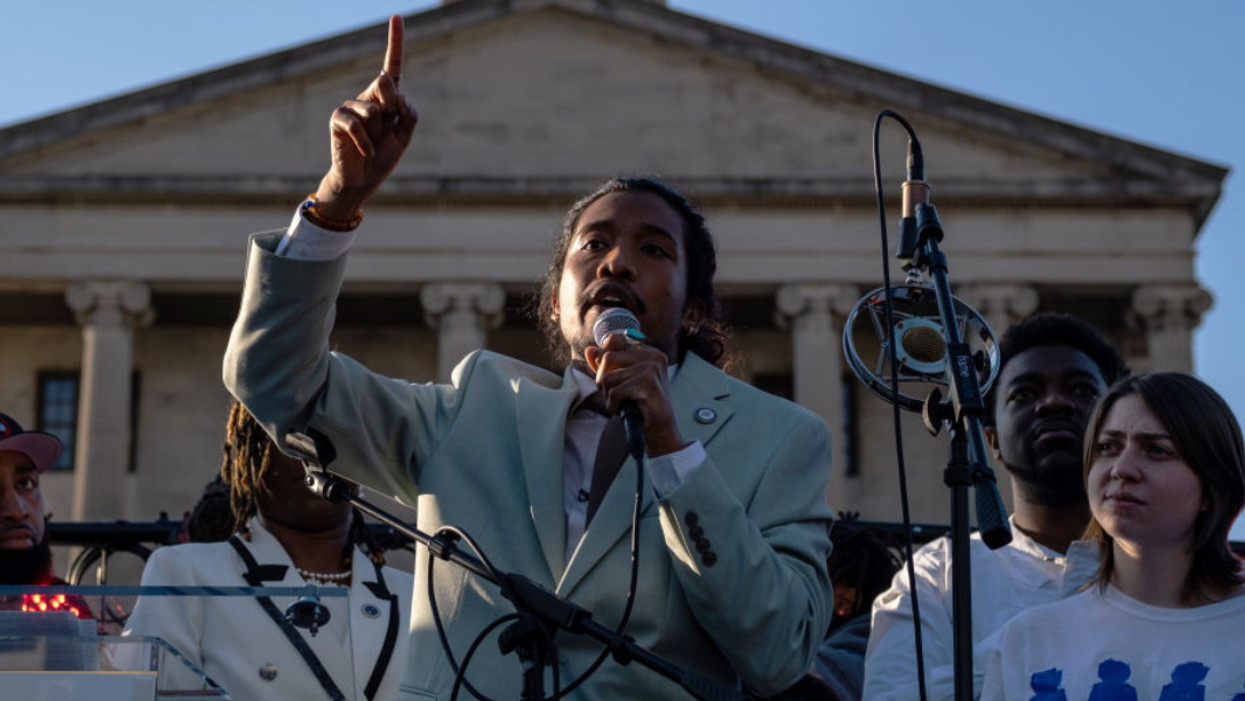Nevins is co-publisher of The Fulcrum and co-founder and board chairman of the Bridge Alliance Education Fund.
There is a burgeoning movement in America working to bridge the divides that separate us. The work to find common ground is undoubtedly needed given the extent of the growing divide that seems out of control if one is aware and attuned to social media and the rhetoric of our politicians.
As admirable as finding common ground is on the surface, the use of bridge building as a strategy to help revitalize our democracy is extremely complex. As the co-founder of The Bridge Alliance, an organization that strives daily to help create a just and thriving democracy, the question of how to best welcome and support people and organizations to effectively bring about our goal of a healthier democracy is the subject of constant analysis.
The roughly 100 members of the Bridge Alliance have many different approaches to improving and repairing our democracy. Some focus on civic engagement, some on governance and policy making, some on campaign and election processes, and some on bridge building.
Those focused on bridge building this week are fully focused on the annual National Week Of Conversation (NWOC) where millions of Americans from the left and the right participate in deep conversations. NWOC was created for those exhausted by division and hatred. Thousands of ordinary citizens participate, bringing their passion for issues to an environment where everyone can be heard. The uniqueness of NWOC is that all Americans, whether from the left, right, or independent, engage in meaningful conversations that can rekindle relationships and help us relearn how to be the “we” we know we can be.
The growing participation in the yearly NWOC events illustrates the concern Americans have for the widening divide. And while there is no doubt that finding common ground is a critical component for the survival of our democracy, it is imperative that we explore its limits and deficiencies especially during these times where more and more strident politicians have emerged emulating the approach of Donald Trump which is consciously designed to counter “bridging.” This flaming of emotions and use of hateful rhetoric is an approach that is repugnant to everything that the bridging movement represents. And so the dilemma for the bridging movement is to determine how the it maintains an image of bi-partisanship needed to draw people from the left and the right, yet at the same time repudiate behavior that is clearly counter to the most basic principles of democracy or even a modicum of human decency.
The bridging movement believes in seeing the best in people, and acknowledging our differences resulting in action to reach a compromise that acknowledges our commonalities. Yet the question remains what happens when the issue at hand needs immediate action or the personalities involved are dangerous and offensive.
This difficult question came into clear focus this past week in Tennessee when two black representatives were removed from office because the controlling party thought their behavior on the floor of the Tennessee state capital in support of gun control was unacceptable. As senseless mass murders continue to escalate in our country we must ask ourselves if civil conversation between people with opposing viewpoints is enough.
Rep. Justin Jones, the 27 year old Democratic Black member of the Tennessee legislature who was expelled, was told to be careful given that Democrats were vastly outnumbered. A friend advised:
“Everyone kind of kept their head down and told us to do the same, you know, to assimilate, to conform.” |
Rep. Jones refused to heed the advice.
The calculation Rep. Jones had to make was to decide when does civility become compliance and when does activism that might further divide serve a tactical function that outweighs a more passive approach? The actions last week in Tennessee received national attention that the normal protocol never would have received and within a few days the two expelled representatives were reinstated to their seats. As a purely tactical decision, ignoring the advice not to make waves certainly paid off.
The bridging movement is focused on divisiveness as the cause of the problems in our democracy and thus through conversation disagreements in theory will be reduced. However, in this time when the very existence of our democracy is being called into question, at a time when we must defend and protect our democracy, sometimes civility might not always be the cure.
Extraordinary times call for extraordinary actions. If we don’t raise our voices now then when?
Crystal Hayling, executive director of the LIbra Foundation, addressed this issue when she wrote:
I am a very polite person, but niceties are not my North Star. In this moment of reckoning, I have a claim to make and I will make it at the decibel level required to elicit a fair and proper response. Protestors don’t yell because they like to be loud. They yell so that those whose feet rest on our necks will step off.
Because I am a Black woman, absolutely no one in my family reminisces fondly about nicer yesteryears in America. So a “return to civility” at the cost of truth-telling escapes me. I don’t long for some fantastical time when, in back rooms without women and with whiskey, laws were hashed out. There has never been a time when we got a seat at the self-determination table by being sweet and docile. Redressing injustice requires agitation. Change generates friction.
This debate over civility and perhaps what might be termed fierce civility or civil disobedience is not new to our country. John Lewis, the great civil rights leader of the 1960’s, used the term “good trouble,” many times in his three decades in the United States House of Representatives.
And who can forget these words written from prison by Dr. Martin Luther King, Jr.:
“ We know through painful experience that freedom is never voluntarily given by the oppressor; it must be demanded by the oppressed.”
To its credit, the bridging movement leadership recognizes that committing to and achieving greater racial diversity represents an existential need for the field and that welcoming inclusion may require modifications in the approach. However, recognizing this need for racial diversity without recognizing the need for reevaluation of the principles and strategy serves as just window dressing that will never result in the diverse and pluralistic bridging movement required for the movement to scale for a powerful future.




















